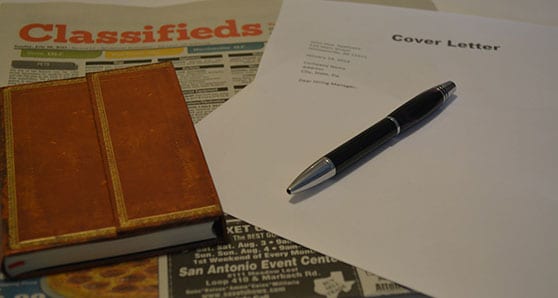 Once upon a time, in a world seemingly far, far away, a job seeker would sit down with the classified section of the Sunday newspaper and a red pencil (it always was a red pencil, wasn’t it?) and circle jobs that were perfect for them.
Once upon a time, in a world seemingly far, far away, a job seeker would sit down with the classified section of the Sunday newspaper and a red pencil (it always was a red pencil, wasn’t it?) and circle jobs that were perfect for them.
They would attach a well thought-out cover letter to their resume, drop them into envelopes, add a couple stamps, march down to the post office and within two to three days, someone with two eyes and a brain would read it. That’s not the case today.
Today, you must write your resume(s) to satisfy all the various readers. Yes, READERS, plural. You have a minimum of three today. If you don’t make it past any one of them, you’re done. Here’s who/what you must satisfy:
- A Computer
- Human Resources
- Hiring Manager
Here’s how it works and why.
Resume reader No. 1: ATS
In almost every case, your resume/application is not read by a human without first being scanned by a company’s Applicant Tracking System (ATS) software. The computer searches for keywords. If you don’t have the right keywords in the right quantity, you never get to a real person (with or without a brain).
Now you know why they call it the Black Hole!
Companies today can receive well over a thousand applications/resumes for a single position, at a time when they have reduced HR department staffing to bare bones levels. Some recruiters are doing the work of three people, so don’t blame them. In fact, one Talent Acquisition Manager tells the story of receiving in excess of 1,200 applications for a single administrative assistant position.
The resume is a flawed job-getting tool by Dana Wilson
One recruiter shared, “Not only do ATS’ search for keywords and long-tailed strings (keywords strung together in a specific order), but in some systems in order to pass muster each keyword must appear a minimum of three times.” So, after you discover the keywords for your title, you must include them in quantity without using either the Over-Stuffing or White Space scams. (Look for my future column on these scams.)
Reader No. 2: Human Resources
Let’s say a miracle occurs and your resume makes it into the grubby little mitts of a company recruiter. You only have two to six seconds to impress or you’re off the circular file. That’s right, your entire professional history compressed into a handful of seconds! So you better grab’em by the throat, but how?
Fold your resume in half then open it again. After the heading, there are about 12 centimetres before you reach the fold. Everything above the fold matters, nothing below the fold matters. This is where you need to focus your attention. (Forget the flowery career summary and objective … this real estate is too valuable.)
Unfortunately, using tables, columns, borders, lines and all the other things that can make a resume interesting to the eye (and brain) can make the ATS blow a gasket, so you can’t use them now. You can, however, create your own set of columns by tabbing over. Feature your skills, accomplishments, training and awards in this section. Use keywords if possible.
Reader No. 3: The Hiring Manager
Here’s where you should get creative. You can use charts, graphs, company logos, columns, bullet points and other methods to differentiate yourself from the other candidates. Since most Hiring Managers have never interview trained, you have to guide your interviewer in any direction you want.
Hand the Hiring Manager your Interview Resume and lead with something like, “I hope you don’t mind, but I took the liberty of adjusting my resume so you don’t have to read through countless paragraphs to find what I bring to the table. Please see the section near the top titled Value Proposition.”
If you focus on satisfying the requirements of the first two Readers, you are much more likely to get the chance to talk to a Hiring Manager and get hired.
Dana Wilson is a freelance writer living in Edmonton, Alberta.
The views, opinions and positions expressed by columnists and contributors are the author’s alone. They do not inherently or expressly reflect the views, opinions and/or positions of our publication.


